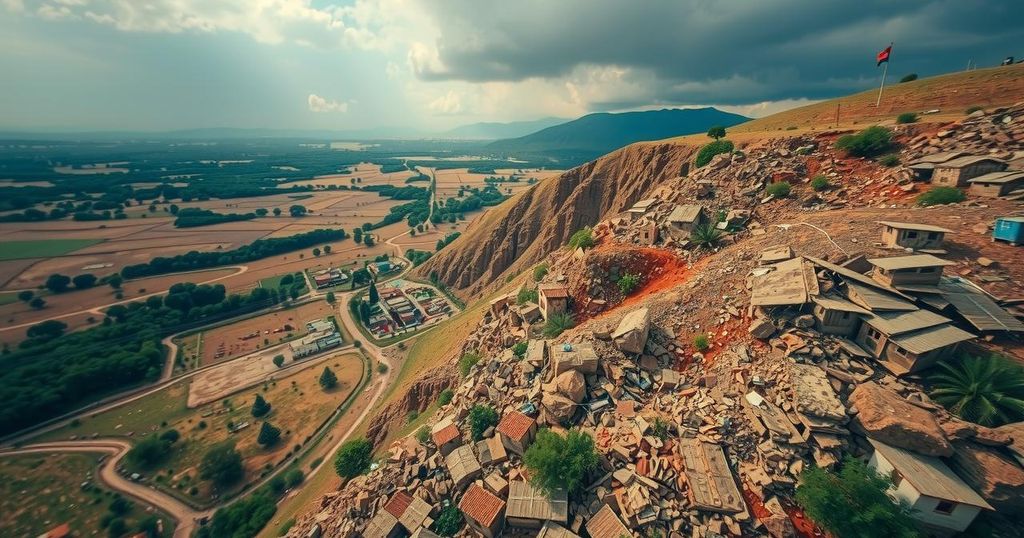Ethiopia Faces Increased Earthquake Activity, Raising Concerns for GERD Safety

Ethiopia has faced a third earthquake, registering a magnitude of 4.7, amidst an increasing frequency of seismic events. Experts are raising concerns about the safety of the Grand Ethiopian Renaissance Dam due to heightened geological activity, which could pose risks if stronger earthquakes occur closer to the dam. The capacity of the dam has seen significant enlargement, raising alarms among experts regarding its structural integrity in the face of ongoing seismic threats.
Ethiopia has recently experienced its third earthquake, which registered a magnitude of 4.7 at a depth of 10 kilometers. This seismic event occurred approximately 570 kilometers from the Grand Ethiopian Renaissance Dam (GERD) and 400 kilometers from the lake’s eastern border. The quake is among the 16 such incidents that have transpired in the last five weeks, contributing to a total of 31 earthquakes recorded this year, predominantly within the 4-5 magnitude range. Professor Abbas Sharaqi, an expert in geology and water resources at Cairo University, has highlighted that this year’s seismic activity has been notably higher than expected. He reported that 38 earthquakes have been documented in 2023, with the most powerful registering at 5.6 degrees. In terms of historical context, the average number of earthquakes exceeding four degrees between 2014 and 2020 was only 5.3. Concerns regarding the safety of the GERD have been raised due to the increased seismic activity. As per Professor Sharaqi’s findings, while earthquakes of lower magnitudes at considerable distances from the dam currently pose no threat, a more significant earthquake occurring closer to the dam could be perilous. Presently, the GERD’s capacity has expanded to hold 60 billion cubic meters of water, a substantial increase from the original design of 11.1 billion cubic meters set by U.S. plans. On the same day as the most recent earthquake, two additional quakes of magnitude 4.6 were recorded, indicating a continuing trend of seismic activity in the Ethiopian Rift Valley, which poses further risk to the infrastructure of the GERD. Historically, the initial quake in this series occurred on September 27, followed by several others predominantly located in the region nearly 570 kilometers away from the dam. The precarious situation surrounding the GERD underscores the necessity for rigorous and ongoing monitoring to ensure the dam’s integrity amidst rampant seismic disturbances. Professor Sharaqi has urged for heightened vigilance, particularly given the potential disastrous consequences that could arise from any future significant earthquakes impacting the site directly.
The Grand Ethiopian Renaissance Dam (GERD) has been a focal point of regional discourse due to its substantial water storage capacity and its implications for transboundary water management. Constructed along the Blue Nile, this monumental project aims to serve Ethiopia’s growing electricity needs. However, the dam’s design and increased water storage have fueled tensions with neighboring countries, primarily Egypt and Sudan, which express concerns regarding water flow and potential ecological impacts. The recent surge in seismic activity in Ethiopia has intensified fears about the dam’s stability during earthquakes, prompting experts to raise alarms over the safety measures in place to protect this critical infrastructure.
In summary, Ethiopia is undergoing a heightened period of seismic activity, with multiple earthquakes recorded recently. Experts caution that increased monitoring of the Grand Ethiopian Renaissance Dam is essential, especially as the dam’s current storage capacity far exceeds its original design. The potential for more intense earthquakes occurring closer to the dam presents a significant risk. The situation necessitates vigilant oversight to safeguard this critical asset against future geological threats.
Original Source: ozarab.media







